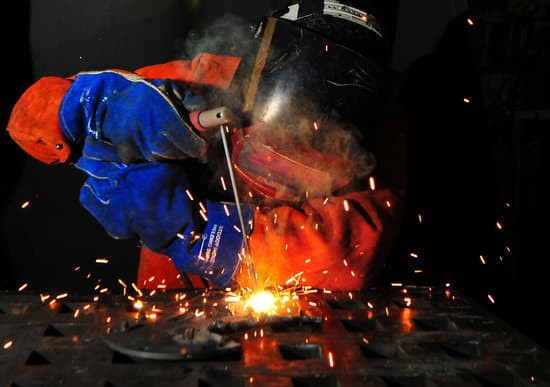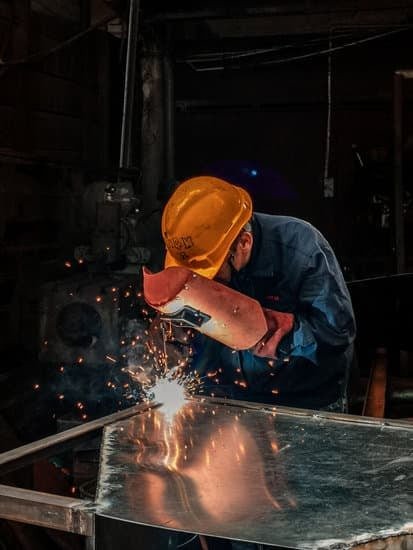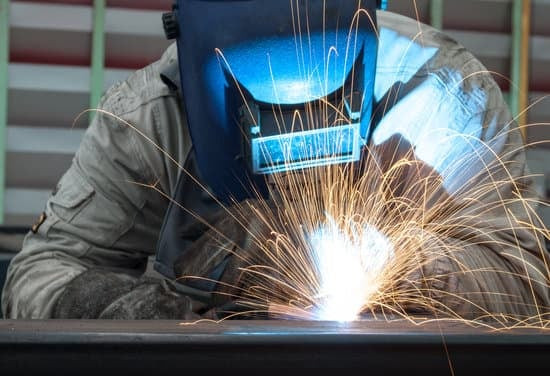MMA - Metal Arc Welding
(Welding with covered electrodes)
MMA electrode welding is a method centred on the use of a fusible electrode created from a proper core covered with a special lagging. Due to its combination of efficiency, versatility of work, as well as its ability to carry out diverse projects, it is considered the most versatile welding technique.
MMA welding flow:

- An arc is formed between the electrode and the parts to be joined, produced by an electric current.
- Under the influence of heat, the arc is struck (the electrode tip touches the workpiece). The effect of the droplets being transferred to the weld pool by the arc created is to melt the electrode (the electrode sheath decomposes).
- Shielding gas is formed as the cooling rate of the weld decreases slagwhich must then be removed.
Advantages determining the universality of the MMA method
- the possibility of combining different materials, both coloured (e.g. stainless steel, cast iron, aluminium) and black steel;
- Unlike MIG or MAG welding, MMA functionality means that weather factors (e.g. strong wind, rain) do not prevent the welding process;
- For this welding technique, apart from the basic work protection measures, additional equipment (e.g. gas regulator, additional hoses, gas cylinder) is not necessary;
- the considerable strength of the resulting welds;
- potential repair of cast iron components;
- This process can be carried out independently of the parts to be joined when using a covered electrode, the operator's position or the workplace.
Electrode thickness - how to choose it?
| Material thickness | Electrode diameter |
| 1 mm to 2.5 mm | 1.6 mm |
| 2.5 mm to 3.5 mm | 2 mm |
| 3 mm to 5.5 mm | 2.5 mm |
| from 4 mm to 6.5 mm | 3.2 mm |
| 6 mm to 9 mm | 4 mm |
| 7.5 mm to 10 mm | 5 mm |
| 9 mm to 12 mm | 6 mm |
What should you consider when deciding on an MMA?

To avoid making mistakes, during the welding process:
- take care of technical details (maintenance of equipment, health and safety);
- ensure that the arc, which is the distance between the workpiece and the electrode, is of a length close to the diameter of the electrode;
- perform welding with precision and care;
- control the entire process in terms of speed of operation and current intensity;
- use the special glasses used for this type of work;
- optimum choice of electrode types, the most versatile choice is a rutile lagging electrode (R).
Types of covered electrodes
- (A) - acid lagging, which is designed to generate welds of unparalleled smoothness;
- (B) - alkaline laggingwhich is designed to produce a binder with outstanding temperature resistance and flexibility;
- (C) - cellulose lagging, which is designed for outdoor welding and working in harsh weather conditions;
- (R) - rutile laggingwhich is designed for multitasking.
Acid electrodes
The merit of the smoothness and flat shape of the weld in acid laggings is that they are composed of deoxidisers and iron oxides. Usually, if nothing impedes welding and they have no white efflorescence, they do not need drying. They are ideal for multi-position work (e.g. sub-low and side-to-side).
Alkaline electrodes
Alkaline laggings consist mainly of magnesium, fluorite and hygroscopic calcium, so they absorb moisture from the air. Moisture makes the arc unstable and the lagging itself performs less well during the gas shielding process. Because of this feature, such electrodes should be stored in a dry environment. When using a non-moisture electrode, a weld is obtained which is characterised by resistance to small cracks and is therefore much less brittle than that obtained using a rutile electrode. The biggest disadvantage of this type of lagging is that it cannot be welded vertically, as the weld will run off in such a case.
Cellulose electrodes

When access to the weldable surface is difficult or impossible, cellulose lagging is an excellent choice, as it does an excellent job of welding metals together in a top-down direction. An additional advantage of these electrodes is that they are resistant to weather changes and are often used for outdoor work. They ignite the arc easily, so a perfectly prepared surface is not a prerequisite for their use. By using cellulose electrodes, we are able to achieve a deep fusion and therefore increase the quality of the resulting weld.
Rutile electrodes
Ruthenium lagging is considered the most versatile material to work with, so it should not pose a challenge even to novice welders. They can be welded in almost any position and this is because they melt easily. Their great advantage is that they can be used for joining small parts, repairs or carrying out maintenance work. In addition, the slag that these electrodes leave behind is not difficult to remove. The disadvantage of rutile lagging is its brittleness, which is why it is safer to use other electrodes (e.g. alkaline) when welding parts subjected to greater vibrations.
Practical application of MMA welding:
The main industries in which covered electrode welding is used are the manufacturing sector (for the necessary welding of components), the construction sector (for on-site installation activities) and the shipbuilding sector (for the universal creation of welds). In addition, MMA welding is also very popular for smaller projects (e.g. smaller repair work, hobby projects).
The most popular questions
Is welding with lagging electrodes universal?
Due to its combination of efficiency, versatility of work, as well as its ability to carry out diverse projects, it is considered the most versatile welding technique.
How do I choose the thickness of the lagging electrode?
To select the electrode thickness correctly, the thickness of the electrode must be measured against the thickness of the electrode diameter.
Where are covered electrodes used?
The main industries in which covered electrode welding is used are the manufacturing, construction and shipbuilding sectors.
Which electrodes are best for MMA welding?
The most versatile choice is a rutile (R) lagged electrode.

